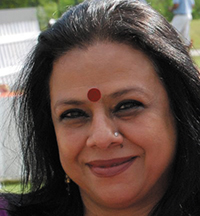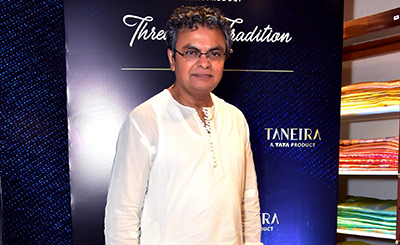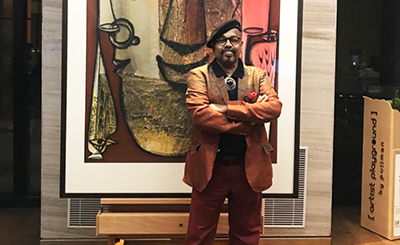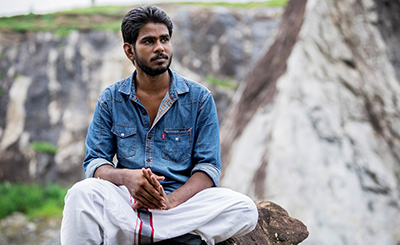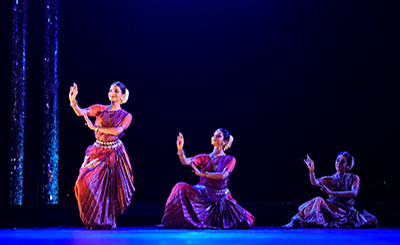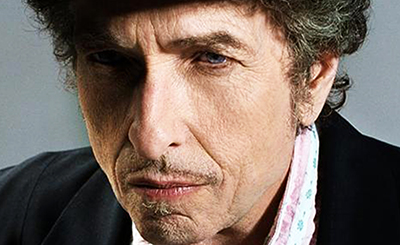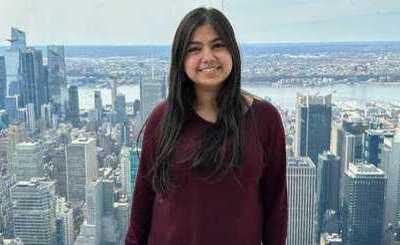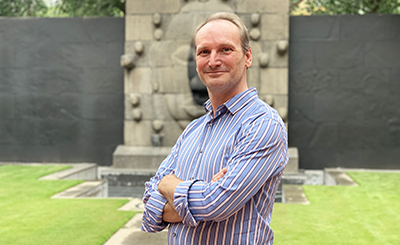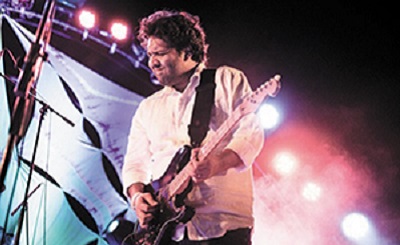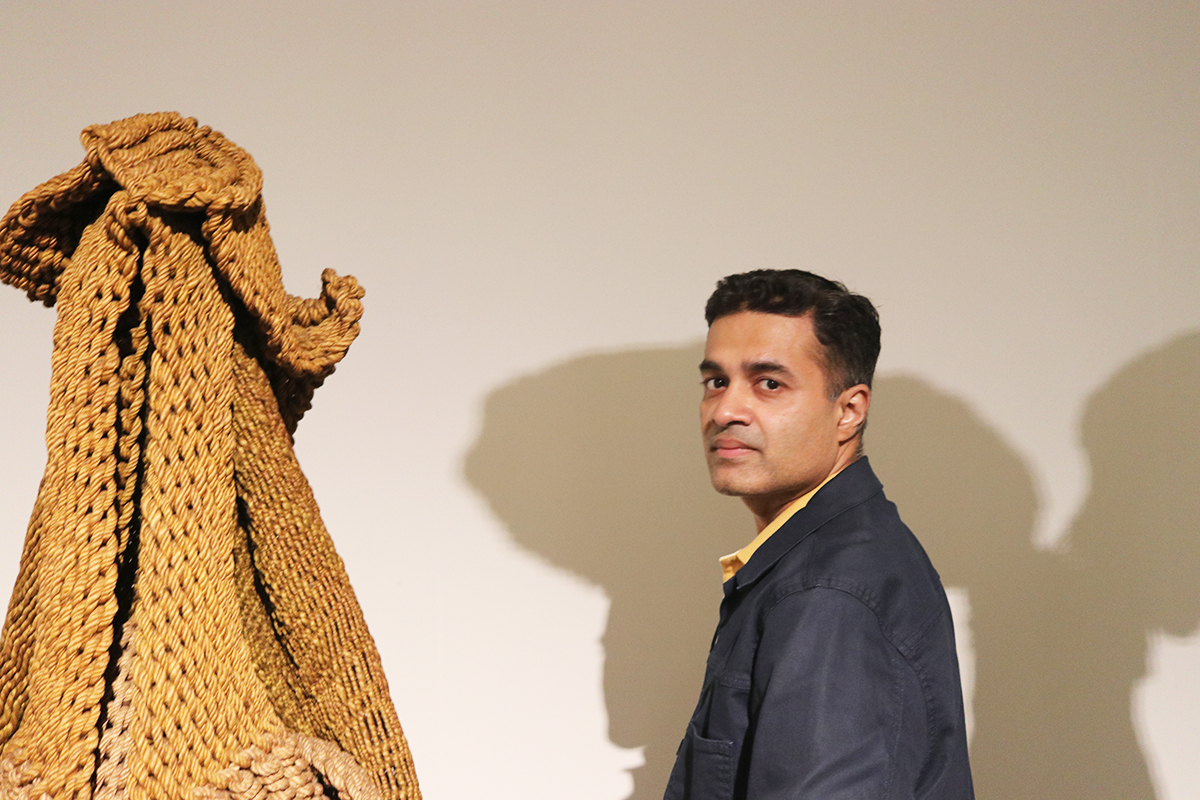
Ina Puri: What are some significant milestones in your trajectory that made you change your career from a successful corporate manager to an artist, with no guarantees of even making it, initially?
Rahul Kumar: I think I was 18 years old when one day I walked up to my parents and declared that I wanted to be an artist, professionally. Coming from a middle-class value system and a family of professionals, this announcement gave them sleepless nights and I was directed to pursue ‘proper’ education and get a ‘life’. And so, I completed an MBA and got onto the bandwagon of the corporate world. I was encouraged and supported to pursue my interests in arts… but on the side. A Fulbright scholarship and a sabbatical from work allowed me to earn a master’s degree in arts from USA. I promised myself to quit the corporate world before turning 40 and I lived up to that promise.
On the hindsight, I am glad this is how it was. The financial base allows me to now make art with complete liberty, not be worried about my art to sell to pay the bills. Further, I realised I developed two very distinct sets of skills — ability to articulate (owing to my corporate life), and an understanding of, and sensitivity towards the arts (owing to my education and practice). And in an attempt to bring them together, I began to write on visual arts. I am now safely out of the rat-race, focussing on art through my own practice, art journalism, and curatorial projects.
Ina Puri: What were the attractions that drew you to clay? In your growing-up years, were you at all exposed to ceramics Delhi?
Rahul Kumar: I saw a potter demonstrating on a traditional potter’s wheel at the central cottage emporium. It was a big family outing and while my cousins were excited to shop, I told them to get me at the pottery section when they were done. It was magical to see a lump of clay take form on rotating wheel. The touch of clay was intriguing for me, almost empowering. This is when I decided to learn the craft. There was not internet or Google then. So, after much asking around, I got to know of the Delhi Blue Pottery School on Ring Road. I enrolled myself for weekend classes, marking the beginning of a long a fruitful journey.
Funnily, it was almost after 10 months of making pots that I discovered the firing and glazing process. I was content to be able to form clay and the raw pots were exciting enough then. Over the months, I began to interact with other established potters of the time. Kristine Michael was my next-door neighbour in Asian Games Village, but till much later I did not know that she was a ceramist.
Ina Puri: Who were the ceramists who were already established when you started working?
Rahul Kumar: There were several potters but very few who pushed the boundaries to make expressive sculptural works. Delhi Blue Pottery and Golden Bridge Pottery were the significant schools, besides MSU in Baroda to impart training in clay. I was fortunate to begin my journey when Gurcharan Singh was still around. His daughter-in-law and son, Mary and Mansimran Singh, established and ran the Andretta Pottery in Himachal Pradesh. Of course, there was a community thriving in Pondicherry and Aurovile, but I had limited interaction with them then. I feel my biggest influence has been PR and Dipalee Daroz, both for technical foundation and aesthetic approach. I closely interacted with Jyotsna Bhatt and Ira Choudhury. But an exhibition of Ray Meeker in early 2000s blew my mind. The sheer scale and confidence in his works were captivating.
Ina Puri: You have received recognition and distinction as a ceramic artist. What makes your work stand apart? Ceramics is such a fragile medium. Does experimentation involve too many challenges?
Rahul Kumar: I guess it is for others to tell if my work is any good, but as the creator, I feel I express my deepest emotions with all honesty through it. Heavily textured and bold forms are probably a reflection of my uncompromising personality. I am most interested in treatment of the clay in my work. The process of making often takes a lead and the resultant form creates an element of surprise, even for me. Being trained as a potter, the vessel form remained central to my work even after I moved away from functionality. Gradually, my work became completely sculptural. Of late, I have explored integrating other media along with clay, like paper and welded iron.
Experimentation is an attitude. The medium of clay and the entire process of ceramics is complex and potentially almost forces any practitioner of this medium to embrace what comes as a challenge. For someone who likes to be completely in control and have things highly predictable, I feel clay practice is not for them. Certainly not in India, where we are only now beginning to get access to standardised raw material and equipment. Sometime back, I fired a kiln in my studio. For the first time ever, I had a firing that lasted 15 hours and I encountered a unique situation of temperature stalling. This after probably firing 500 kilns. One of the glazes on my ware did not mature. While I could refire the work, I loved the rough tactile feel of the unmatured glaze. I may use this intentionally next time — under-fire this glaze for the same effect.
Ina Puri: I remember your striking work at the Ceramics Triennale at Jawahar Kala Kendra, Jaipur. Tell us about that particular work.
Rahul Kumar: The first Indian ceramic Triennale was a milestone event. The diversity and scale displayed in the exhibition provided for a spectacular experience and showcased clay in a truly contemporary lens, pretty much for the first time in India. My work titled Terra Geometrix was made in collaboration. It has significant parallel to my past work through the circular form, referring to the wheel thrown. The surface of each component picked textures from urban surroundings and criss-cross lines running through the pieces evoke a sense of an aerial view of connecting roads. There is an element of discovery through few pieces disbursed in the installation that are drawn from the Rajsthani architecture and traditions — the work was displayed in Jaipur after all.
Ina Puri: Do you feel that ceramics has got the recognition it deserves? I haven’t seen any ceramic artists participate in the Kochi Biennale, despite the presence of some outstanding ceramists in our country. This is not the case in other countries.
Rahul Kumar: I am glad you asked this question because I have a slightly different perspective about this. Ceramics or clay is a mere medium. What defines a work of art to be called contemporary is entirely dependent on what is made, not what it is made of. We never ask if ‘stainless steel utensils’ got the recognition in art…but one artist welded them together only to become the most recognised Indian artist globally. So again, paint, stone, clay or cow-dung are all material and by themselves do not make anything traditional or contemporary. Coming specifically to your question, only a handful of people have ventured in expressing through clay to make it truly contemporary or cutting-edge. We cannot really blame a Kochi Biennale, for instance, to not include the medium in its programming so far. There has been a significant change in the last 5-7 years and I am sure ceramics will be part of such events in the future. But if 100 artists are selected out of lakhs who practise in classical medium, then proportionately a handful of ceramists represent a very small percentage. Besides, contemporary ceramics as a phenomenon itself is fairly nascent in India.
Ina Puri: Amongst the ceramists you have met, are there any artists who stood out and made a mark on you?
Rahul Kumar: I source inspiration from many things around me and from various forms of creative expressions. Architecture, city scape, nature — all have intriguing forms. My interactions with musicians and painters have helped me open up my mind with new perspectives. Within clay practices, my teachers PR and Dipalee Daroz have had a significant contribution in my approach to clay. I admire works of many others and have partially borrowed from a wide spectrum of sensibilities to make my own unique language.
Ina Puri: Apart from the senior artists like Ira Chowdhury, Jyotsna Bhatt and Daroz who are the younger artists who have made a mark? Do our art institutions have any separate section on ceramics, despite its long tradition in our own country?
Rahul Kumar: Again, I would not limit myself to think only clay practitioners. I extensively interact with early career artists for my curatorial projects. And my journalism allows me to have deep conversations with global avant guard creatives. It is impossible for me to not be influenced by all of this stimulation. And to name just a few would be unfair and most daunting. Let us just say that I like to be a sponge that absorbs everything thrown at it. What I keep and let flow away is my journey.
Ina Puri: What is your curatorial vision when it comes to doffing your curator’s hat? Was your recent show purely ceramics?
Rahul Kumar: I most often work with early to mid-career practitioners when curating exhibitions or residencies. And because of my own practice, materiality in the work and skilful execution are important in what I enjoy. A deep personal expression, connections to one’s roots, and a minimal approach are also aspects that are significant for me.
I co-curated a show for Gallery Art Incept with Prima Kurien. It has been a personally enriching experience working with her. She has a seasoned eye and yet an unrestricted approach. We asked 12 artists to respond to the idea of looking inward and how external influences inform our psychology. I am also beginning to flesh out a note for another show to take place later in the year to look at the genre of architecture and geometry. It is still early-stage, but I am incredibly interested in this style of work across various media.
More from Arts
Comments
*Comments will be moderated



